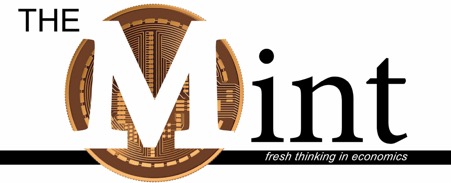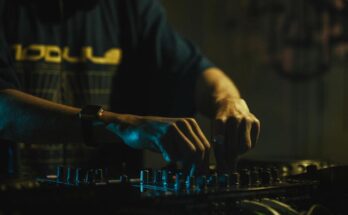Samantha Power directs the think-and-do tank, the BioFi Project, which seeks to reimagine how capital flows can support place-based biocultural regeneration. The Mint spoke with Power about her critique of the current financial system and the vision she is helping to bring to life.
Samantha Power trained as a conventional neoclassical economist, beginning her career in the corridors of traditional political power — as an intern at the US Treasury – then working at the World Bank and contributing to UN-led initiatives. But after years of trying to change the system from within, her trajectory took a radical turn, and she now identifies as a “regenerative economist” building new systems that make the old ones obsolete.
When Power recalls her early days in economics, she frames them as both formative and disillusioning. Graduate school coincided with the signing of the Paris Agreement, and she immersed herself in questions of climate finance, asking, “How could global capital be redirected away from fossil fuels and deforestation toward renewable energy, Indigenous forest stewardship, and other life-affirming investments?“.
If your pension fund invests in the destruction of biodiversity, there may not be a functioning economy to pay out to your beneficiaries decades from now.
That line of inquiry carried her to the World Bank, where she joined the Finance Global Practice. Her mandate was to advise some of the world’s largest institutional investors — pension funds and sovereign wealth funds — on how to future-proof their portfolios given the unfolding ecological crisis and broader polycrisis. The argument, she explains, was simple: “If your pension fund invests in the destruction of biodiversity, there may not be a functioning economy to pay out to your beneficiaries decades from now.”
In 2020, she co-authored the World Bank’s first report on mobilising private finance for nature — a 100-page document that emerged in the depths of the pandemic. Yet even as she was shaping these conversations at the highest levels, she saw limitations. The money tended to flow toward large-scale conservation projects owned by corporations in the Global North, not grassroots communities.
“That was the wake-up call,” she says. “We needed a system that could channel resources into the hands of people already doing the work of regeneration — often indigenous communities and grassroots groups who had been at it for generations.”
Beyond risk and return
Convincing financial institutions to invest in nature regeneration required a new language. In the World Bank years, Power and her colleagues leaned heavily on the concept of risk. Destroy the biosphere, and the economy collapses — no matter how diversified your portfolio. But Power’s vision goes further. She argues that life itself is regenerative, and therefore can generate a spectrum of returns: ecological, social, and cultural, not just financial.
Investment, she writes, begins with inspiration — the spark that draws people into caring for their bioregion.
Her book, co-authored with Leon Seefeld, BFFs: Reimagining Finance to Regenerate Our Planet, lays out how a new layer of financial intermediaries – Bioregional Financing Facilities (BFFs ) – can become the connective tissue between increasingly centralised financial resources and the mycelial network of regeneration.
BFFs make investments that generate four types of returns. First beginning with inspiration — the spark that draws people into caring for their bioregion. This leads to ecological benefits, including cleaner water, healthier soil, and restored habitats. From there, social dividends emerge — stronger communities, greater resilience in times of crisis. Only at the end of this chain do economic and financial gains emerge, often through revenue created by regenerative enterprises. All of these returns can be connected to whole systems regeneration with the right investment structure and portfolio of projects and organisations.
“We need a new theory of value,” she insists. “Wealth is not just money. And the window in which money is worth something is closing fast.”
Slow is smooth, smooth is fast
Power resists the temptation to flood bioregional projects with capital too quickly. Instead, she advocates for “slow capital”—patient, often philanthropic funding that allows communities to organise and prepare strategically sequenced portfolios of projects that take in larger amounts of capital over time.
Currently, much of the funding for the existing BFFs – often Bioregional Trusts or Bioregional Funds – comes from foundations, family offices, and multilateral grant organisations. Over time, these catalytic funds can give rise to Bioregional Venture Studios that incubate regenerative enterprises that attract impact investors. But Power is clear: traditional institutions bound by strict fiduciary duty are not her immediate target for funding bioregional regeneration.
“The point is not to replicate the old paradigm with greener labels,” she says. “It’s to build a new layer in the global financial system—one that serves life rather than extracts from it.”
Regeneration in practice
What does this look like on the ground? Power offers vivid examples.
The historic removal of a massive dam on the Klamath River has allowed salmon to return after a century’s absence.
In the Pacific Northwest, a group called Salmon Returns is reimagining watersheds from Alaska to California. The historic removal of a massive dam on the Klamath River has allowed salmon to return after a century’s absence. Local tribes, such as the Yurok, are investing in reforestation, cultural revival, and new food systems. From carving redwood canoes to building fish processing facilities, the projects embody biocultural regeneration—reviving both ecosystems and cultural traditions.
In the Amazon, the Amazon Sacred Headwaters Alliance, representing 30 Indigenous nations, has launched initiatives ranging from solar-powered canoe companies to community-based vanilla cultivation. One striking project is a “jaguar biocultural credit” system, in which the health of jaguar populations serves as an indicator for ecosystem stewardship. The credits are sold through Regen Network’s blockchain-based platform, with early buyers including the Jaguar Tequila Company.
“These aren’t abstract models,” Power says. “They’re living portfolios of projects designed by the people who know their land best.”
The commons, reimagined
BioFi’s work also intersects with the commoning movement, which seeks to revive collective stewardship of shared resources. Power sees BFFs as legal containers for modern commons—whether it’s a town square, a firehouse repurposed as a co-working hub, or even community-governed land trusts.
Capital has been supreme for too long.
The challenge, of course, is reconciling external finance with bottom-up control. Almost no capital arrives without strings attached. But Power hopes BFFs can act as “membranes,” inviting investors to release some control and trust the wisdom of place-based communities.
“Capital has been supreme for too long,” she says. “We’re trying to flip that dynamic—so that money serves life, not the other way around.”
Looking ahead she wants to develop bioregional banks, modelled on the U.S. system of Community Development Financial Institutions (CDFIs). Such a bank would allow citizens to deposit their savings locally, knowing the funds would be reinvested in regenerative projects in their own watershed.
“It’s about aligning interests,” she explains. “If your returns come from the destruction of the place you live, that’s not really a return at all. A bioregional bank makes your prosperity inseparable from the health of your home.”
Gathering momentum
The work of the BioFi Project is no lone effort. Nearly 700 people participate in the BioFi community of practice, joining monthly calls to explore everything from governance structures to storytelling strategies. Power and colleagues led a learning and design journey earlier this year that they called the BioFi Cultivator. 22 teams from across the Americas participated, 18 of which launched their own BFFs.
We don’t have the luxury of tinkering around the edges.
“Slow is smooth,” she repeats, “But the movement is growing faster than we ever imagined.”
The urgency behind Power’s work is impossible to ignore. She often reminds listeners that humanity is living through the sixth mass extinction, a crisis that demands nothing less than a rethinking of our economic foundations.
“We don’t have the luxury of tinkering around the edges,” she says. “We need to reevaluate the premises of the financial system itself. Otherwise, the optionality tokens we call money won’t buy us a livable future.”
Samantha Power’s book, BFFs: Reimagining Finance to Regenerate Our Planet, is available for free as an e-book, with print and Spanish editions also available. To learn more or join the community of practice, visit BioFi’s website.
Watch the full interview here. This article, except for the quotes, was created with AI assistance.


